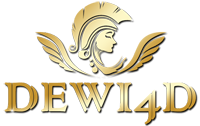
Pengeluaran hk hari ini terbaru kami sediakan untuk para penggemar judi togel hongkong di Indonesia melalui data hk prize paling lengkap. Dengan menggunakan hasil keluaran hk hari ini berdasarkan nomor pengeluaran hongkong pools malam ini yang sah. Para pemain togel hongkong online bisa menggunakannya sebagai acuan utama menentukan hasil hk hari ini yang sah dan valid. Data hk prize paling lengkap diatas bisa bettor dapatkan secara real time setiap hari senin sampai minggu pukul 23.00 wib dengan mudah. Semua hasil pengeluaran hongkong malam ini yang sah dan akurat juga bisa togelers saksikan setiap hari melalui live draw hk hari ini. Togelmania juga tidak perlu lagi bersusah payah untuk mencari hasil keluaran hk malam ini yang sah dari situs resmi hongkongpools.com. Karena togelmania bisa mengetahui hasil hk hari ini tercepat cukup dengan mengunjungi situs pengeluaran hk https://yotocomusic.com/.
Pengeluaran HK Hari Ini Terbaru Dari Togel Hongkong Pools Sebagai Data HK Prize
Pengeluaran hk hari ini terbaru dan tercepat dari togel hongkong pools memang menjadi informasi penting bagi pemain. Dimana para pemain judi togel hongkong di manapun pasti membutuhkan hasil hk hari ini. Tujuannya tidak lain adalah untuk dijadikan sebagai acuan utama mengetahui jackpot togel hongkong malam ini yang sah. Dimana togelmania bisa mengetahui hasil pengeluaran hk hari ini terbaru dan sah dari togel hongkong pools melalui data hk prize diatas. Data hk prize paling lengkap ini selalu kami catat mengikuti nomor pengeluaran hongkong hari ini. Sehingga togelmania tidak perlu takut untuk menggunakannya sebagai acuan utama bermain togel hongkong malam ini.
Hasil pengeluaran hk hari ini memang sudah sepantasnya direkap kedalam tabel data hk prize. Pasalnya para pemain bisa lebih mudah untuk mencerna semua nomor pengeluaran togel hongkong hari ini dan juga sebelumnya. Data pengeluaran hongkong pools memang selalu dimanfaatkan kembali oleh para togelers profesional. Yang mana cukup menggunakan data hk prize paling lengkaps aja, Bettor bisa menemukan sebuah bocoran togel hongkong yang akan keluar. Inilah alasan kami sengaja menyediakan sajian hasil hk hari ini dari togel hongkong pools menggunakan tabel data hk harian.
Data HK Prize Membantu Pemain Togel Melihat Hasil HK Hari Ini Yang Sah
Data hk prize tidak hanya berisi hasil keluaran togel hongkong hari ini saja, Melainkan juga sebelumnya. Artinya cukup menggunakan data hk prize paling lengkap saja, Sebenarnya para togelers dapat meningkatkan peluang menang. Disisi lain, Ketersediaan data hk prize juga sangat membantu para pemain togel untuk melihat hasil hk hari ini yang sah. Seperti yang kita ketahui, Live draw hk prize pada situs resmi togel hongkong pools cukup sulit dicerna oleh pemain. Terlebih bagi para togelers yang masih awam. Dengan menampilkan data hk prize 6d, Tentu para pemain togel hongkong online pemula akan sulit untuk mengetahui hasil hk hari ini yang sah.
Data hk hari ini dari togel hongkong pools memang menjadi sumber informasi terpercaya bagi penggemar judi togel hkg di Indonesia. Mengingat situs resmi hongkongpools yang sudah di blokir oleh jaringan internet negara kita, Para togelers semakin kesulitan untuk mengetahui nomor hk hari ini yang sah. Itulah mengapa data hk prize paling lengkap sengaja kami sediakan untuk membantu para togelers mendapatkan hasil hk malam ini terbaru dan sah. Dengan rincian hari, tanggal, hingga nomor keluaran hongkong hari ini. Tentu togelmania bisa dengan mudahnya mengetahui jackpot togel hongkong hari ini yang sah dan akurat.
Keluaran HK Hari Ini Tercepat Mengikuti Live draw Pengeluaran HK Malam Ini
Keluaran hk hari ini tercepat selalu dicari oleh para togelers menjelang jadwal result hongkong pools yang telah ditentukan. Namun harus diketahui oleh para pemain, Hasil keluaran hk hari ini tercepat tidak dapat mendahului situs resmi togel hkg resmi. Pasalnya semua nomor keluaran hongkong tercepat selalu diupdate mengikuti live draw pengeluaran hk malam ini yang sah. Dimana hongkongpools merupakan sumber terpercaya sebagai penyedia hasil keluaran hk malam ini sah dan akurat. Itulah mengapa para bandar togel online maupun situs keluaran hk tercepat sekalipun terkadang mengalami keterlambatan pengkinian nomor hongkong prize.
Hasil keluaran hk terbaru hari ini memang selalu wajib mengikuti live draw hk pools yang sah. Yang mana satu-satunya situs resmi keluaran hk tercepat sudah pasti hongkong pools itu sendiri.Seperti yang kita ketahui, Hongkongpools dikelola langsung oleh pemerintah negara setempat. Sehingga para pemain bisa terhindar dari aksi kecurangan seperti manipulasi hasil pengeluaran hk malam ini. Dengan turut menghadirkan live draw hk prize, Tentu para togelers juga bisa menyaksikan secara langsung proses pemutaran undian nomor hk setiap hari.
Bandar Togel Hongkong Online Resmi Terpercaya Di Indonesia
Togel hongkong menjadi salah satu pasaran judi togel online maupun offline yang sudah sangat lama dimainkan masyarakat Indonesia. Bisa dikatakan saat ini hanya togel singapore yang dapat mengimbangi popularitas togel hkg di Indonesia. Pasalnya kedua pasaran judi togel online ini resmi dan sudah terbukti selalu mengedepankan transparansi sehingga pemain bisa mendapatkan jaminan keamanan. Dengan menyajikan hasil keluaran togel hkg hari ini secara langsung, Para pemain bisa terhindar dari kecurangan para bandar togel online nakal dan informasi yang tidak benar.
Mencari bandar togel hongkong online melalui mesin pencari seperti google tentu sangat mudah bagi semua orang. Pasalnya cukup bermodalkan perangkat smartphone saja, Para pemain sudah bisa mencari situs judi togel online serta keluaran sgp hari ini tercepat dengan nyaman. Namun demikian, Para togelers wajib sekali untuk memilih bandar togel hongkong online resmi terpercaya di Indonesia seperti dewi4d. Karena bandar togel hongkong terpercaya ini sangat mengedepankan permainan paling fairplay dan terbukti selalu membayar penuh kemenangan member.
